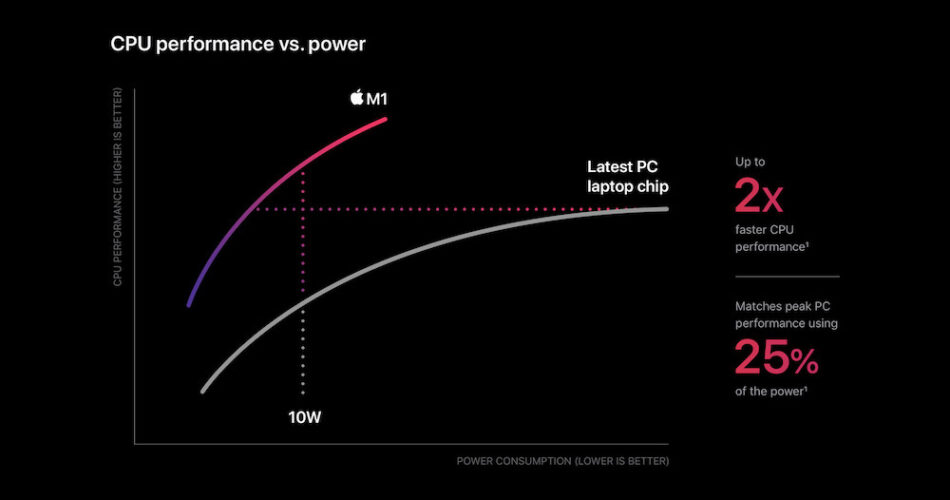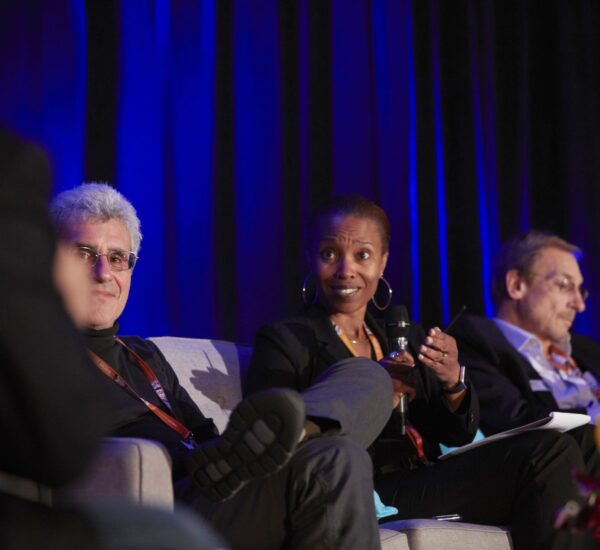As far as I can remember, I’ve always had a disdain towards Apple products. Something about buying a laptop with poor thermals, a restrictive operating system, and a $1400 price tag just didn’t sit right with me. I was more content using my beat-up Thinkpad with Linux installed.
But 2020 has been an interesting year. So it would be fitting that 2020 would be the first year that I would venture out to buy a new laptop and somehow settle on choosing the new M1 Macbook Air. After using it for the past few weeks, I could not be happier. However, this got me thinking. How did Apple convince me (a staunch critic of Apple products) to buy a Mac?
After retracing my steps, I realized it was primarily due to their copywriting. As an engineer, I’ve only recently started to realize how important copywriting is when selling anything. Apple’s recent campaign around the new M1 Macs has been nothing short of spectacular and as engineers, I feel like there 2 key takeaways we all can learn from them.
Talk About Impact And Not Numbers
Two years ago I had just started my own startup that was highly technical. We were building computer vision algorithms to empower minimally trained medical professionals to do oral disease screenings. Our team was filled with engineers who were always striving to grow our accuracy so we could improve the value of our product.
This mentality carried over to our marketing materials, from our website to our sales deck. We had an accuracy of 85% which was about 15% more effective than the current incumbent, and we let everybody know. The number 85 was plastered over everything and we were proud of it. We even showed people how great our F1 Score was in relation to other medical AI companies. Our marketing was heavy on the numbers which we felt accurately demonstrated our product’s value.
However, it never really resonated with customers. Most doctors we were pitching to didn’t even know what an F1 score was. To see how to do numbers correctly we should look at the following marketing material:
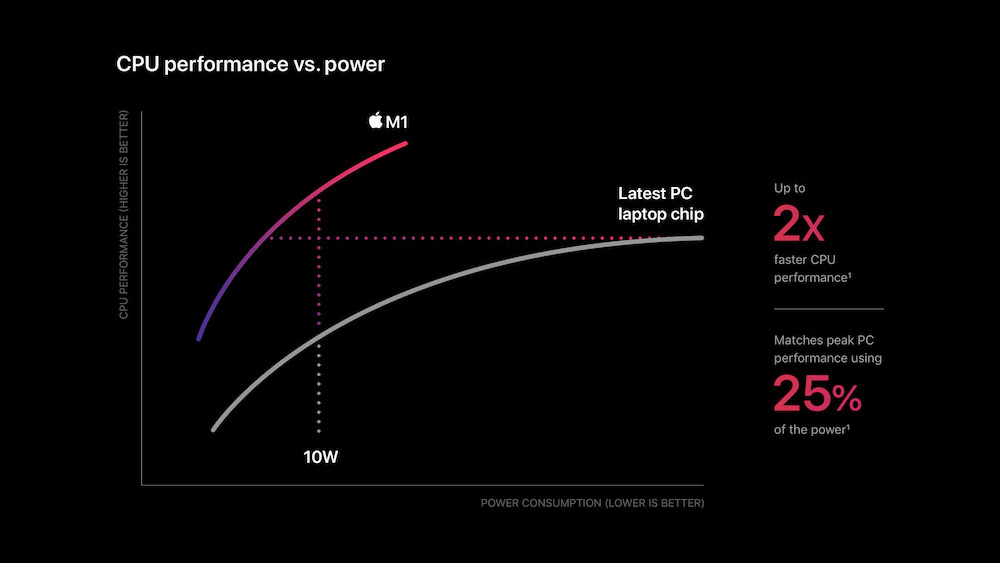
Apple showed this graph at a recent event but notice how there are only 2 numbers on the screen. Even the graph has no clearly visible indicators on the y and x-axis (you really have to pay attention to what each axis represents). Instead, it shows the improvement in relation to other chips without blasting the crowd with a series of numbers. Now, this is how Apple communicates this improvement on their website when focusing on potential customers:

Now the Apple marketing team could have used this space to go into the specifics about the power draw of this new M1 chip and how it’s better than the old Intel chips. In fact, this move was wildly criticized by technical reviewers. Most notably Linus Tech Tips said that Apple’s unwillingness to release these specific numbers could be their downfall on this new Mac (video link). Yet this Mac has had a great reception and great sales.
So why did this marketing move work? Because Apple focused on how this better power consumption was going to solve the deeper emotional problems of their consumers. In one swift sentence, they were able to communicate 3 very key points.
With “Up to 18 hours of battery life. That’s 6 more hours, free of charge”, the Apple marketing team is able to show how this better battery consumption will increase the overall time you (as the consumer) have during a single charge but also clearly draws the competitive advantage by saying that is 6 hours more than their previous models/competitors. Finally, ending with “free of charge” lets us know that we aren’t going to paying more for this increased efficiency. It’s a powerful sentence that clearly conveys a technical topic like the M1 chip’s power consumption into something more digestible to your everyday consumer.
We see this work again in the following:
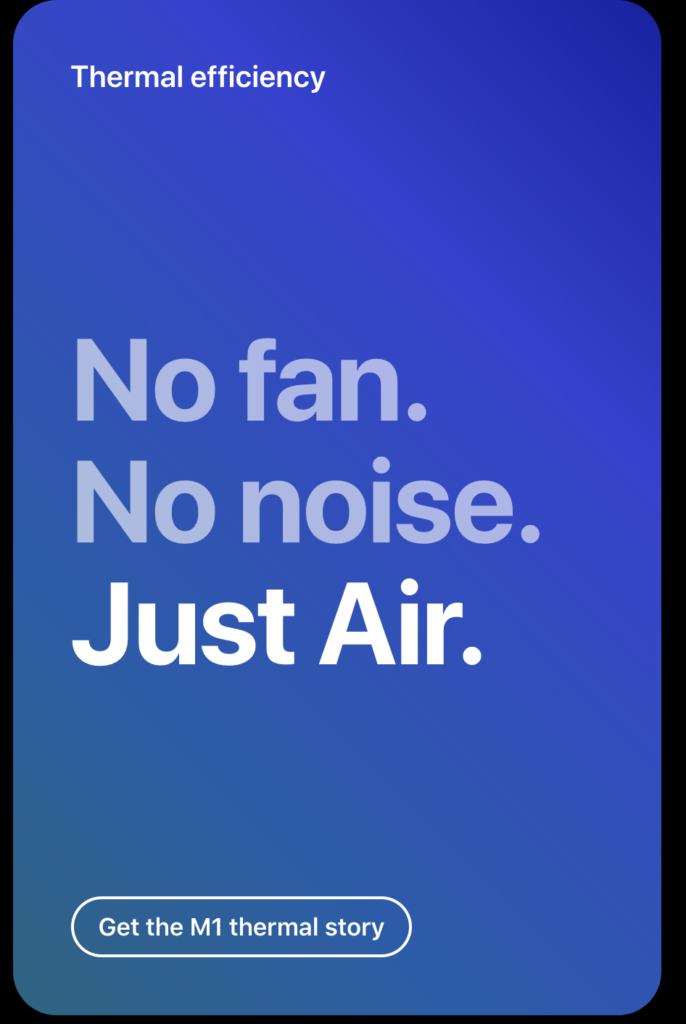
This new Mac has great thermals to the point where there is no fan in the Macbook air. However, even without a fan, there is no tradeoff with performance. Again, the Apple team could have used this time to speak about how hot the Macbook actually gets. They could have pulled an MKBHD and used a temperature gun to compare the temperature under different workloads and put this video on their site. Instead, they recognized the real problem is that most people hate the sound of their laptop’s fan cranking away while they are trying to get work done. So rather than getting into the weeds, Apple decided to step back and focus on what pain point they are solving.
How I’ve decided to apply this was taking a step back and every time I saw that we were using too many numbers, I thought critically about what issue we were solving with that number and replaced it with that.
For example, why did health systems care about our device having 85% accuracy? With higher accuracy, doctors were able to refer their patients with more confidence and improve health outcomes. We quickly changed our copywriting to reflect this sentiment.
Talk Like A Human
This is something that took me a long time to get past. After going through university, most of my writing became extremely formal. But the truth is no one speaks like that. However, when writing marketing materials, I feel like most engineers default to writing like they are trying to pass a university final rather than talk to a customer.
When you scroll down Apple’s website, it seems like someone is speaking to you. For example:
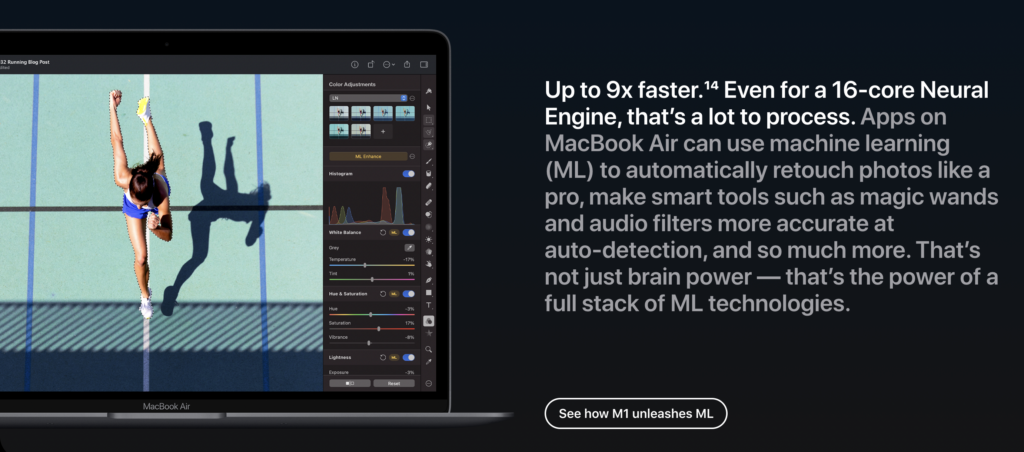
Now this is actually a pretty technical point that Apple is trying to get across. However, they are speaking to us, the consumer, in a super casual tone. They start out with a pretty number centric pitch. However, they quickly pivot to speaking about how this extra speed will help you with your day to day activities. During this part of the pitch, they sound like a normal person.
The light gray paragraph is filled with shortened words (like pro vs. professional) and run-on sentences. They use casual language like “That’s” and casual terminology like “brain power”. If I wrote like this while doing my undergrad ethics class I’m sure I wouldn’t have passed. However, when you see any company writing like this it humanizes them.
This gave me flashbacks to 2 related moments during my freshman year during school. The first moment came when I was walking into my engineering library and saw a desk set up in the entryway. Two students stood in front of it hawking a new app that lets you get discounts on food within Green Street (the most popular street at UIUC). Since they were near the staircase, I had to listen briefly to their spiel before grabbing a brochure and leaving. I never downloaded that app and it soon went under so I’m assuming most people also didn’t download the app. The second moment came my junior year where during a party, a friend of a friend mentioned how he was using this brand new app on campus which let him see food deals. I had built up enough rapport with this stranger where I thought it would be worth checking out this app so I downloaded it that night. I later came to find out that guy was a campus ambassador for that app and it was his job to get students on the app. Even after finding that out, I still kept the app.
So why did I download the app the second time and not the first? Because the first time, I was in a situation where I felt like I was being sold something. Those campus ambassadors had a script and they stuck to it. The second time, I wasn’t actually being sold anything but rather listening to a guy talk about his experience on the app. The difference was very noticeable. In the first case, they were rattling off numbers about how much money I could save while in the second case, the ambassador told me stories about how he got 30 chicken nuggets for 6 dollars or how he was able to get a free meal for his date after finding a buy 1 get 1 free offer at a local burrito joint.
This can be applied to copywriting. The difference between bad and good copywriting is the ability to make it not sound like a sales pitch. If people feel like they are trying to be sold something, they are more likely to put up a wall and not buy anything. As an engineer, I try to write about what I’m working on like I’m telling my friend about it. That way it’s always more personable. Remember, people don’t like being sold to.
Apple does a great job of technical copywriting. Their teams are great at taking complex technical advantages and condensing them down into something more understandable. I think we can all learn from them and apply some of their methods to our own side projects. As the saying goes – “Good artists make, great artists steal”
